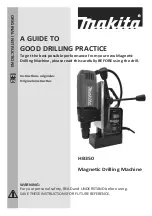
13
position. Close the gas valve on the gas
bottle. Wait five minutes. Reattempt all of
the above steps. If the barbecue still fails
to light, please refer to the manual ignition
instructions below.
•
After ignition, burners should be burned at
the high position for 3-5 minutes in order
to preheat the barbecue. This process
should be done before every cooking
session. The hood or lid should be open
during preheating.
•
After completion of preheating, the
burners should normally be turned down
to a lower setting for best cooking results.
H4. Manual Ignition Instructions
•
Insert lit match through the leftmost
match-lighting hole on the underside of
the control panel and place near leftmost
burner porthole.
•
Push and turn the leftmost control knob
anti-clockwise to the high position.
•
When the left burner is lit, turn the
remaining burners on from left to right.
•
Confirm that each burner is alight before
turning on the next burner.
•
If leftmost burner fails to ignite, contact
your local dealer for assistance.
•
After ignition, burners should be burned at
the high position for 3-5 minutes in order
to preheat the barbecue. This process
should be done before every cooking
session. The hood or lid should be open
during preheating.
•
After completion of preheating, the
burners should normally be turned down
to a lower setting for best cooking results.
H5. Grill Cooking
The cast iron burners heat up the lava rock
underneath the grill, which in turn heats the
food on the grill. The natural food juices
produced during cooking fall onto the hot lava
rock below and vaporise. The subsequent
rising smoke bastes the food, as it travels
upwards, imparting that unique barbecued
flavour.
Do not attempt to cook with the lid closed.
This will result in severe damage to your
barbecue. Ensure all burners are turned off
and the barbecue has cooled down before
closing the lid.
H6. Griddle Plate Cooking
The cast iron burners heat the griddle plate
directly, which then cooks the food on contact.
Plates allow for the cooking of smaller items,
such as seafood, which could fall through the
spaces of a grill. They are also suitable for
cooking items that require high-temperature/
short-duration cooking, such as vegetables
and smaller cuts of fish. Similarly, it can be
used in exactly the same way as a griddle in
the kitchen, for searing steaks, cooking eggs,
etc. Alternatively, it can be used for heating
pans or keeping food warm.
H7. Flare-Up Control
Flare-ups occur when meat is barbecued, and
its fat and juices fall upon the hot lava rock.
Smoke helps give food its barbecued flavour,
but avoid excessive flare-up to prevent food
being burned. To control flare-up, it is
advisable to trim away excess fat from meat
and poultry before grilling. To reduce flare-
ups, the burners should be turned down to the
low setting. Flare–ups can be extinguished by
applying baking soda or salt directly onto the
lava rocks. Always protect your hands when
handling anything near the cooking surface of
the barbecue.
Flare-ups occur more at the
start of cooking, particularly with processed
meat products, and it may be necessary to
turn the burners down to their lowest setting to
start with and then turning up at a later stage
in the cooking process. The barbecue should
also not be overloaded. Some parts of the
cooking area are hotter than others. The
hottest areas will be above the burners which
will be where the flare ups will normally start.
By leaving free space you can simply move
the food away from the flare up to a cooler
area until the flare up has subsided
.
If a fat fire should occur in the drip tray, turn all
knobs to the off position, turn off the gas at the
bottle, and wait for the fire to go out. Do not
pull out the drip tray or douse with water.
H8. End of Cooking Session
After each cooking session, turn the barbecue
burners to the “high” position and burn for 5
minutes. This procedure will burn off cooking
residue, thus making cleaning easier. Make
sure the hood or lid is open during this
process.




































